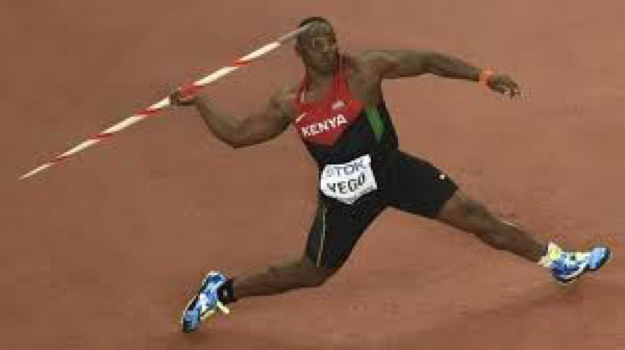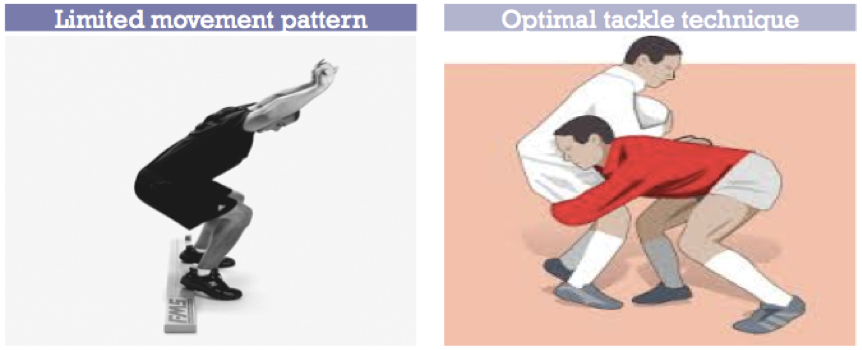To screen or not to screen, what a question…?
Last month, in the editorial section of this publication, our esteemed editor made some comments regarding the usefulness of athlete screening, and in particular the Functional Movement Screen (FMS) within his coaching context(1). While I realise that it is within an editor’s remit to be somewhat controvertial in an attempt to stimulate discussion, I must admit to disagreeing (very passionately at first) with Jason’s point of view. I thought I might use this article to explain why I believe that screening has a very important place within sport science and strength and conditioning practice.
I think that the first question that any coach or sports scientist should ask themselves when considering whether to use a screening process is “What do I hope to get out of this?”. If your aim is to predict injuries (which is probably what the editor was alluding to), there is very little evidence to support this practice (2,3). If this is the only goal of your screening process, save your time and money, it doesn’t work! However, as practitioners we should be less concerned with injury prediction, than we are about injury prevention and player development. I think that “screening” tests are very important in these contexts.
The first important thing to acknowledge is that screening is simply another form of observation, and that observation is innate in the coaching processes. Coaches observe what an athlete does, compare this against their mental model of what the skill or activity should look like, and then implement a plan to improve the skill. Knowing what an athlete is currently able to do is the first step in improving them. Its essential that we understand what an athlete is capable of before we prescribe training to them, if we don’t there could be a serious mismatch between the prescription and the ability. Can you imagine specifying a 60km bike ride for a child who has just taken off their training wheels? Our training prescription needs to be appropriate for the level of our athlete.
Screening is a part of this observation and prescription system, that focuses on range of motion and the body positions that athletes can achieve. In its simplist form it is a basic check that our athletes can get into the body positions required by their sport. If they can’t achieve these positions efficiently they are unlikely to be achieving their full potential. Furthermore, if athletes struggle to attain the necessary positions, applying high physical or repetitive loads in these positions is very likely to lead to injury. Here’s an example, you’re not going to get very far as a javelin thrower if you aren’t capable of a high degree of external shoulder rotation and hip extension (figure 1). Therefore, it makes sense to ensure that an athlete can in fact achieve the positions required in competition and training before embraking on a training program.

A further example is presented in Figure 2. Tackling safely in rugby requires that players keep their eyes on the target while bending at the ankles, knees and hips to achieve a safe body height. If a player is unable to achieve this body position in screening test like the deep squat, it is very unlikely that he will achieve it in the dynamic environment of a rugby match. All the tackling practice in the world won’t improve this skill in a player who can’t get into this body shape. Knowing whether an athlete can reach the necessary body positions will direct coaching strategies to inform how the skill can be improved.

Of course not every sport requires great ranges of motion, and the movement screens applied should be appropriate to the sport in question. It’s probably not necessary to test whether an athlete has the range of motion required to run around the block. On the other hand you can’t be a competitive hurdler without an excellent dynamic range. Therefore, while screening can provide vital information to inform your training program, the screening test needs to fit closely with the demands of the sport.
While text book movement patterns are desirable, very few athletes are perfect. Determining what movement patterns and ranges need to be addressed, and which can be worked around is challenging for less experienced practitioners. The screening process can be a bit of a rabbit hole in that it generates huge amounts of information. It is often difficult to discern what is interesting and what is important. This is where generalist screening tools like FMS6,7 or the athletic ability assessment (AAA)8 can be helpful. The great advantage of these generalist movement screens is that they simplify the screening process. They direct trainers to the important patterns, highlighting where they should look first. Also importantly, the cut off value tells trainers where the movement ability is functional, if not optimal, allowing traininers to prioritise movement pattern development against other training program goals. Screening helps sort out training priorities.
If you are a coach of youth or developmental athletes, the development of general movement proficiency is a major concern for you program. The acquisition of good fundamental movement skills are key outcomes of all long-term athlete development programs(4). This is because it is difficult to determine what sport a developmental athlete may later specialise in, and so it is the responsibility of all youth coaches to provide a grounding in general movement skills. It has been demonstrated that athletes who demonstrate higher levels of proficiency in general movement skills achieved better performances over time in track and field(5). Fundamental movement skills like the ability to squat, lunge, twist and hip hinge are key building blocks for more complex movement patterns and should be taught to all sporting populations. Screening test batteries like FMS (6,7) and AAA (8) provide useful check lists for those working with young athletes. These can be used to guide the movement curriculum to ensure that young athletes receive well rounded development.
I hope that this article has helped to show that screening protocols do in fact warrant a place within the strength and conditioning coach and sports scientist respective tool boxes. All tools are designed for a specific purpose, and tend to complicate the job if they are used in a way other than intended. The skilled craftsman is the one who knows which tool to use at the correct time to get the job done.
References
- Wulfsohn J. EDITOR’S MUSINGS: TO SCREEN OR NOT TO SCREEN? Sport Science Collective. 2017;(10):1-2
- Whiteley R. ‘Moneyball’ and time to be honest about preseason screening: it is a sham making no inroads on the 1 billion dollar injury costs in baseball. Br J Sports Med. 2015. doi:10.1136/bjsports-2014-094541.
- Whiteley R. Screening and likelihood ratio infographic. Br J Sports Med. 2016. doi:10.1136/bjsports-2015-095782.
- Lloyd RS, and Oliver JL. The youth physical development model: A new approach to long-term athletic development. Strength & Conditioning Journal. 2012;34(3):61-72.
- Chapman RF, Laymon AS, and Arnold T. Functional movement scores and longitudinal performance outcomes in elite track and field athletes. Int J Sports Physiol Perform. 2014;9(2):203-11. doi:10.1123/ijspp.2012-0329.
- Cook G, Burton L, and Hoogenboom B. Pre-participation screening: the use of fundamental movements as an assessment of function - part 1. N Am J Sports Phys Ther. 2006;1(2):62-72.
- Cook G, Burton L, and Hoogenboom B. Pre-participation screening: the use of fundamental movements as an assessment of function - part 2. N Am J Sports Phys Ther. 2006;1(3):132-9.
- McKeown I, Taylor-McKeown K, Woods C, and Ball N. Athletic ability assessment: a movement assessment protocol for athletes. Int J Sports Phys Ther. 2014;9(7):862-73.